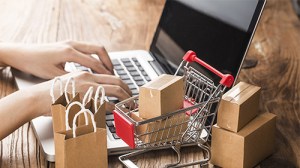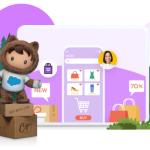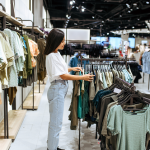New-age consumers are tech-savvy, prefer omnichannel experiences, and expect a whole new level of customer service.
The saying, ‘the customer is king,’ has been around since the start of the retail industry in the 20th century. But it’s never been more relevant today. In the wake of the COVID-19 pandemic, we are finding ourselves in a new digitised landscape.
As brick-and-mortar shops closed and customers moved online, they quickly grew accustomed to:
- Hyper-personalised engagement
- Convenient delivery options
- 24/7 customer service
Now, new-age consumers expect to engage with businesses on their own terms, schedules, and preferred platforms. So how can businesses adapt to the behaviour and expectations of the new shopper?
By connecting with your customers in a whole new way with Sales Cloud, Service Cloud, Marketing Cloud, Analytics Cloud, and more! Watch the Salesforce Overview Demo.
For those who are still unsure, let’s take a trip into the mind of customer 2.0! Now, businesses can lay the groundwork for a bright future in an increasingly connected world.
Meeting the needs of new-age consumers
Global lockdowns have expedited the implementation of long-term digitisation projects for businesses worldwide. In a time of social distancing, today’s shopping experience is more touchpoint than high street.
Emerging third-party channels, such as A.I. and voice assistants, promise another potential paradigm shift. And CRM systems offer businesses a way to better connect with their customer base.
E-commerce grew by 71% in Q2 of 2020. While that number may not be completely sustainable, many of the customers that shifted to digital channels during lockdown are there to stay. Retailers who are waiting for the old normal to return will have difficulty keeping up with their competitors. New-age consumers have already moved on to new, digital shopping methods.
The majority of today’s shoppers choose to buy from retailers, brands, and online marketplaces. There are different strengths and purposes for each.

Brick-and-mortar shops still have their place
So how will the brick-and-mortar store fit into the new landscape? Physical stores were still the preferred place to pick up a new product before COVID-19 hit. And they still offer a very positive consumer experience.
For instance, brick-and-mortar stores allow consumers to:
- Evaluate a potential purchase
- Engage with in-store demos
- Participate in launch parties and workshops
Brick-and-mortar stores offer in-person benefits that the digital realm lacks. However, in-person retail stores can struggle to turn an initial customer purchase into repeat business. Their best bet for building long-term customer loyalty occurs at the first contact point.
Online retailers don’t face the same obstacles as brick-and-mortar shops. Since repeat buyers are already familiar with the product, they usually turn to online marketplaces to find the best prices and most convenient fulfilment options.
New age consumers: different generations, different expectations
A shopper’s age can impact their consumer behaviour. For instance, Gen Zers are much more likely to use influencers to discover and evaluate new products.
Gen Z consumers are also the most likely to utilise shopping apps and social media channels when browsing or making a purchase. And Millennials tend to use chatbots and instant messaging.
Both Millennials and Gen Zers share an enthusiasm for mobile wallets. This showcases the fact that flexible and agile payment systems will only become more popular.
Want to run your business from your phone? Check out a short Mobile App Demo to see if it’s the right first for you!
How can retailers upgrade their service for customer 2.0?
Creating an omnichannel experience that connects all channels is a priority for today’s retailers. Here are 4 ways that retailers can adapt to the challenges of the current landscape:
- Use AI to provide commerce insights, offer product recommendations, and send out post-purchase emails. Learn more.
- Reimagine fulfilment options to include new partners or use stores as fulfilment centres. Retailers that offered in-store pickup for online orders saw revenue grow by 27% in Q1 of 2020.
- Leverage social. Social media platforms are quickly becoming an essential part of the shopping process. Users appreciate the convenience of buying on their favourite channels, like the Instagram Shop. Brands and retailers can also utilise these opportunities to engage more meaningfully.
- Use solutions like Salesforce Einstein to create self-service options, personalise communications, and deploy chatbots.
The Future of Retail relies on new-age consumers
No one knows what exactly tomorrow holds for retail, but we do know one thing; retail is changing. The future of shopping may look different, but there’s clearly a future.
Now’s the time for retailers to become more customer-centric, implement new technologies and strategies, and reimagine their business to fit in with a changing landscape.
To see more about how retailers can thrive in the current climate, check out The New Retail Playbook.
























